As a marketer, I’ve seen how effective email marketing strategies boost a brand’s online presence. Knowing the different types of email campaigns is key for a winning marketing plan.
In this guide, I’ll show you the many email marketing campaigns, from simple to complex. This will help you make a big impact. You’ll learn how to make your marketing plans work better by using these campaigns.
Strategic Value of Email Marketing
Email marketing is on of the most populer way to reach people directly. It offers a big reach and personal touch. It sends messages directly to customers, making a closer bond than other marketing ways.
Why Email Remains a Digital Marketing Powerhouse
Email marketing is very important in digital marketing. It has a high return on investment and helps drive sales. A study shows email marketing gets an average of $42 for every $1 spent.
This is because email lets businesses talk directly to customers. This makes it more likely for customers to engage and buy.
Setting Goals for Your Email Campaigns
To make your email marketing better, set clear goals. These goals should match your business aims. Whether it’s to sell more, get customers to interact more, or make your brand known.
By setting specific goals, you can see how well your campaigns do. This helps you make better choices for future emails.
| Email Marketing Goals | Description | Example Metrics |
|---|---|---|
| Increase Sales | Boost revenue through targeted promotions | Conversion rate, Average Order Value |
| Improve Engagement | Enhance customer interaction through regular newsletters | Open rate, Click-through rate |
| Enhance Brand Awareness | Increase brand visibility through educational content | Subscriber growth rate, Social shares |
Understanding email marketing’s value and setting goals helps businesses grow. It lets them reach their marketing goals through email campaigns.
Welcome Email Campaigns
When someone new joins your email list, you have a chance to make a great first impression. Welcome email campaigns are key to this. They introduce your brand, build trust, and get people excited from the start.
Creating the Perfect First Impression
Your welcome email should be friendly, helpful, and look good. It’s important to personalize the content. Use the subscriber’s name and make the message fit their interests.
Some important things to include are:
- A warm welcome message
- Clear info about your brand and what subscribers can expect
- A strong call-to-action (CTA) to get people involved
Optimizing Open Rates and Engagement
To get more people to open your emails, make your subject line catchy. Make sure your email looks good on phones. Also, segment your list to make your message more specific. Timing is also key; send your welcome email right after they sign up.
Welcome Series vs. Single Emails
Choosing between a welcome series or a single email depends on your goals. A welcome series lets you tell a story in detail. A single email gives a quick intro.
The secret to a great welcome email is to be real, interesting, and relevant to your audience.
Newsletter Campaigns
Making good newsletter campaigns is like art and science. You need to know your audience, make interesting content, and arrange it well. This way, your readers will enjoy it.
Structuring Engaging Newsletters
A good newsletter grabs your readers’ attention. It starts with a catchy subject line and a strong intro. Then, it has sections for easy reading.
Content Ideas That Keep Subscribers Opening
To keep readers interested, give them useful content. This could be news, special deals, or learning stuff. Knowing what your readers like is important.
Try personalization techniques to make your newsletters more special for each reader.
Frequency and Consistency Best Practices
Figuring out how often to send newsletters is tricky. You want to be remembered without being too much. Being consistent is important.
Whether you send newsletters weekly, monthly, or every three months, keep your schedule. This helps keep your readers interested.
Promotional Email Campaigns
Businesses use promotional email campaigns to boost sales and engage customers. These campaigns offer deals, discounts, or promotions to subscribers.
Balancing Offers Without Being Pushy
Creating promotional emails can be tricky. It’s important to offer value without being too pushy. Subscribers should feel they’re getting a good deal without feeling forced to buy. Businesses can make offers personal to their audience.
Designing High-Converting Promotional Emails
Designing emails that convert needs compelling content, attractive visuals, and good CTAs. A well-designed email can boost click-through and conversion rates.
Effective Call-to-Action Strategies
CTAs are key in promotional emails, guiding subscribers to buy or take action. Best CTAs are clear, action-oriented, and mobile-friendly. For example, “Shop Now” or “Get Your Discount” works better than “Click Here.”
| CTA Strategy | Description | Example |
|---|---|---|
| Prominent CTAs | Make CTAs stand out visually | Using bright colors or buttons |
| Action-Oriented Language | Use verbs that encourage action | “Shop Now,” “Get Your Discount” |
| Mobile-Friendly CTAs | Ensure CTAs are easily clickable on mobile devices | Using large, easy-to-tap buttons |
Marketing expert Seth Godin said, “The best marketing doesn’t feel like marketing.
This quote shows the value of making promotional emails appealing and valuable to subscribers.
Seasonal and Holiday Email Campaigns
Use seasonal and holiday themes in your emails to make them timely and interesting. This way, you can get more people to engage and boost sales and brand awareness when it matters most.
Planning Your Calendar for Maximum Impact
To make your seasonal and holiday emails really count, plan ahead. Pick important dates like Christmas, Halloween, or back-to-school. Then, make a content calendar for those times.
Here’s what to do:
- Find out which holidays and observances your audience likes
- Plan your content and deals early
- Make your emails match the season or holiday
Standing Out During High-Volume Sending Periods
When it’s holiday time, lots of emails fill up inboxes. To get noticed, make your content unique and personal. It should speak to your audience.
Use data to sort your audience and send them messages that fit. For example, look at this table to see how to segment your audience:
| Segment | Preferred Content | Example Campaign |
|---|---|---|
| Young Adults | Discounts and Promotions | Exclusive Black Friday Offers |
| Families | Gift Ideas and Family Activities | Christmas Gift Guide |
| Professionals | Productivity Tools and Business Offers | Year-End Productivity Sale |
AsMarketingPro says, “Personalization is key to making your email campaigns stand out in a crowded inbox.” By adding seasonal themes and personal touches, you can grab attention and get people to really engage with your emails.
Essential Types of Email Marketing Campaigns for Every Business
Every business needs a good email marketing plan to do well online. A well-made email plan can help get people involved, increase sales, and keep customers coming back.
Must-Have Campaigns in Your Email Strategy
To make your email marketing better, you need to mix up your campaigns. Some key ones are:
- Welcome emails to introduce new subscribers to your brand
- Newsletters to keep subscribers informed about your business
- Promotional emails to drive sales and conversions
- Abandoned cart recovery emails to re-engage possible customers
Adapting Basic Campaigns for Different Industries
Even though the basic types of campaigns are the same, how you use them can change a lot. For example, a B2B company might use emails to help leads grow. On the other hand, a B2C brand might send out more ads and special deals.
B2B vs. B2C Campaign Differences
B2B and B2C email marketing are different because of who they talk to and what they say. B2B emails are about building relationships and giving value. B2C emails are more about getting people to buy things right away.
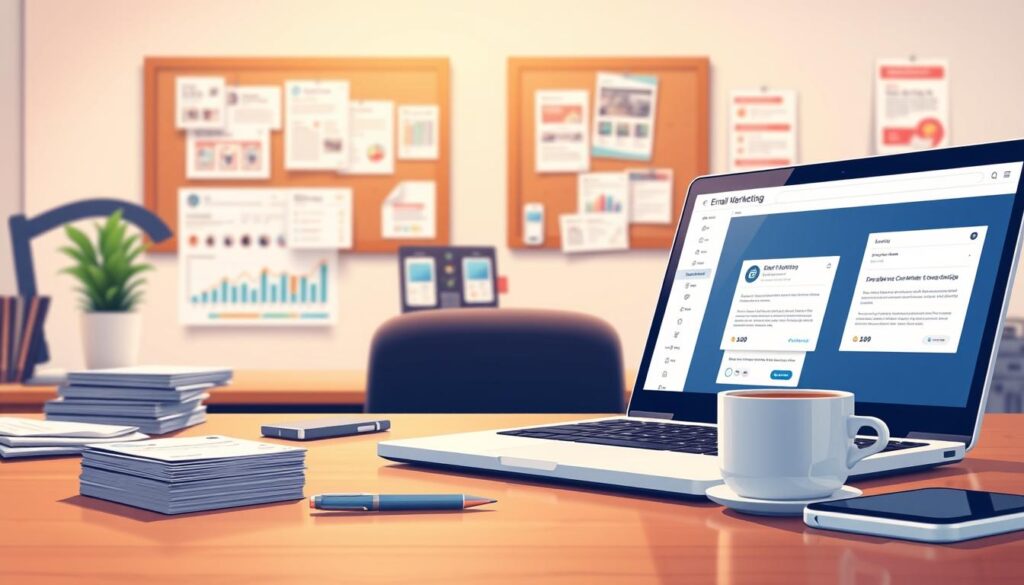
Knowing these differences is key to making an email marketing plan that works for your audience.
Automated Drip Campaigns
Automated drip campaigns make email marketing easier. They help send emails at the right time. This way, businesses can talk to their audience often, helping leads grow and relationships get stronger.
Setting Up Effective Email Sequences
To make a good email sequence, know what your audience likes. First, decide what you want to achieve, like teaching or selling. Use segmentation to make messages fit each part of your audience.
Here’s how to make your email sequence:
- Find out what starts the sequence, like when someone joins your list.
- Plan what each email will say and when to send it.
- Make emails personal by using names and interests.
Timing and Spacing Best Practices
When and how often you send emails matters a lot. Too many emails can be too much. But, too long between emails can lose people’s interest. It’s all about finding the right spot.
Start with a welcome email, then share helpful stuff, and lastly, send out ads. How often depends on your audience and goals. But, usually, 3-7 days between emails works well.
Tools and Platforms for Automation
Many tools and platforms can help automate your campaigns. Here are a few:
| Platform | Features | Integration |
|---|---|---|
| Mailchimp | Email automation, segmentation | Integrates with CRM systems |
| HubSpot | Advanced automation, analytics | Integrates with sales tools |
Using these tools and following best practices can make your automated drip campaigns very effective. They can help get more people involved and make sales.
Abandoned Cart Recovery Campaigns
Recovering abandoned carts is all about knowing what customers want. It’s a key strategy for online stores. It helps them bring back customers who were interested in their products.
Understanding the Psychology Behind Cart Abandonment
Many things can make customers leave their carts. High shipping costs and hard checkout processes are big reasons. Knowing why they leave is the first step to getting them back.
Studies show that 70% of shoppers leave because of extra costs or worries about their info.
Crafting Emails That Bring Customers Back
Winning back customers starts with good emails. Using the customer’s name and mentioning the products they left behind helps a lot. Also, giving discounts or free shipping can push them to buy.
Multi-Stage Recovery Sequences
One email might not do the trick. A multi-stage recovery sequence works better. It could include:
- An initial reminder email right after they leave.
- A second email with customer reviews or testimonials.
- A final email with a discount or promotion to encourage them.
By getting why customers leave and using a multi-step plan, businesses can get more sales back.
Re-engagement Campaigns
Re-engagement campaigns help keep your email list healthy. They wake up inactive subscribers. Over time, some people might stop opening your emails.
This could happen if their interests change or they forget about you.
Identifying Inactive Subscribers
To start a re-engagement campaign, find inactive subscribers. Look at your email list to see who hasn’t opened emails in a while. This could be 6-12 months.
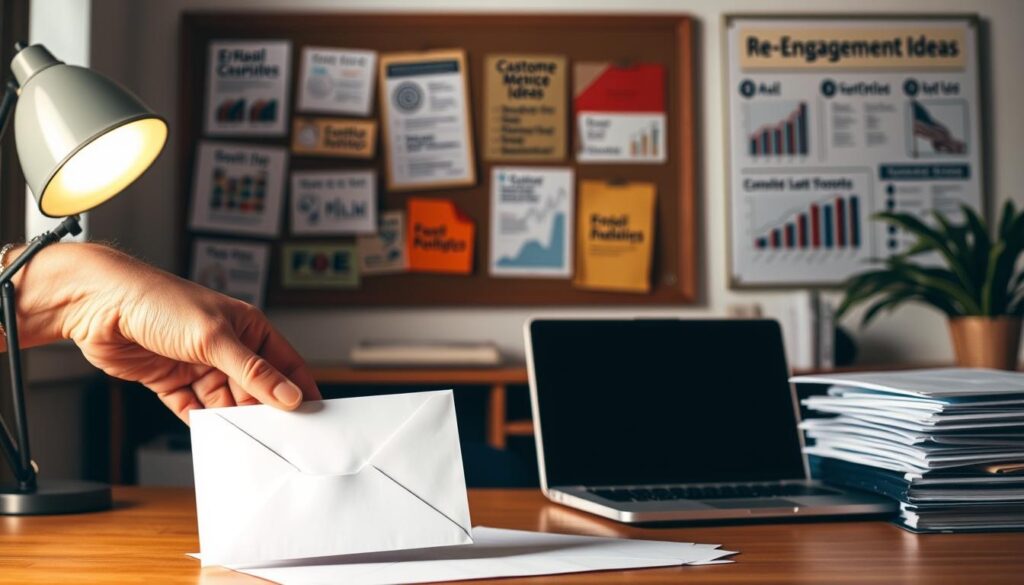
Strategies to Rekindle Interest
Now, make a plan to get inactive subscribers back. Here are some ideas:
- Personalized Content: Make content that matches their interests.
- Special Offers: Give them special deals to get them interested again.
- Surveys and Feedback: Ask for their thoughts to understand why they stopped opening emails.
When to Let Go: Sunsetting Inactive Subscribers
Even with great efforts, some won’t come back. It’s okay to remove them from your list. This keeps your list healthy and stops spam problems.
| Criteria | Active Subscribers | Inactive Subscribers |
|---|---|---|
| Engagement Rate | High | Low |
| Email Opens | Regular | Rare |
| Conversion Rate | High | Low |
With re-engagement campaigns, your email marketing gets better. You’ll see better results.
Personalized and Segmented Campaigns
Email marketing is all about personalization and segmentation. These two work together to make your messages hit home. By tailoring your emails to specific groups, you can really boost how people engage and buy from you.
Beyond First Name: Advanced Personalization Techniques
Using a subscriber’s first name is a start. But, there’s more to personalizing emails. You can make content fit a user’s behavior, likes, and past interactions with your brand.
For example, you can change what you offer based on what someone has bought or looked at. This makes your emails more relevant. It also makes people more likely to respond positively.
Segmentation Strategies That Drive Results
Segmentation means breaking your email list into smaller groups. It leads to better engagement and more sales.
Behavioral Segmentation
Behavioral segmentation groups people by what they do. You can sort users by who has left items in their cart, who has recently bought, or who hasn’t been active for a while.
Demographic Segmentation
Demographic segmentation groups people by who they are. This includes age, gender, where they live, or how much money they make. It helps you send messages that fit different groups better.
Purchase History Segmentation
Segmenting by what people have bought lets you send special offers or recommendations. It’s great for getting people to buy from you again.
To show how good segmentation is, look at this table:
| Segmentation Type | Example | Potential Benefit |
|---|---|---|
| Behavioral | Abandoned cart emails | 25% increase in conversions |
| Demographic | Location-based offers | 30% higher open rates |
| Purchase History | Personalized product recommendations | 20% boost in sales |
Advanced Behavioral Trigger Campaigns
Email marketing is getting smarter. Now, businesses can send emails based on what customers do right away. This makes customers more engaged and likely to buy.
Setting Up Sophisticated Trigger Systems
First, businesses need to know what actions customers take. They look at customer data to understand what customers like. This way, emails can be made just for them, making them more likely to buy.
Examples of High-Performing Triggered Emails
There are many types of triggered emails. Here are a few:
- Abandoned cart reminders
- Product recommendation emails based on browsing history
- Welcome emails that offer personalized discounts
Website Behavior Triggers
Website triggers are very effective. They catch how customers act on the site. For example, if someone looks at a product a lot, they might get an email with a deal.
Predictive Analysis and AI-Driven Campaigns
AI makes triggered emails even better. It uses data to guess what customers will do next. This makes emails more personal and gets more people to buy.
Cross-Channel Integration
It’s important to use triggered emails everywhere, not just in emails. This means using them in social media, SMS, and more. It keeps the message the same everywhere.
Using advanced behavioral trigger campaigns can really boost email marketing. It leads to more people engaging, buying, and making more money.
Conclusion
Learning about different email marketing campaigns can really help your online marketing. This guide gives you tips to make your emails better. You can make them more interesting and personal, which helps a lot.
As you get better at email marketing, try out new things. See what works best for your audience and your goals. Keeping track of your efforts will help you do even better next time.
For email marketing to succeed, you must keep improving. Always think about what your audience needs now. This way, your emails will have a bigger impact and help your business grow over time.
FAQ
How do I create an effective welcome email campaign?
To make a great first impression, focus on your welcome email. Make the content engaging and try to get more people to open it. You can choose to send a series of emails or just one.
Personalize the email by using the subscriber’s name. Tailor the content to match their interests.
What are the best practices for structuring engaging newsletters?
To make engaging newsletters, create interesting content. Use a clear format and make sure it looks good on mobile devices. Segment your list to match your content with your audience.
Use a clear call-to-action to get people to do something.
How can I balance promotional content without being too pushy?
Balance promotional content by adding value. Mix promotional and non-promotional content. Be careful not to send too many emails.
Segment your list to send the right content to the right people. This increases the chance of engagement.
What is the role of automation in email marketing?
Automation is key in email marketing. It helps set up email sequences and automate tasks. It also makes your content more personal.
Automation makes your email marketing better, more efficient, and more effective.
How can I recover lost sales through abandoned cart recovery campaigns?
To bring back lost sales, send emails that encourage customers to return. Understand why they left their cart behind. Use persuasive content and send multiple emails.
This way, you can win back customers who left their carts.
What are the benefits of personalization and segmentation in email marketing?
Personalization and segmentation make your emails more effective. They help you tailor your content to your audience. This leads to better results, more engagement, and higher conversions.


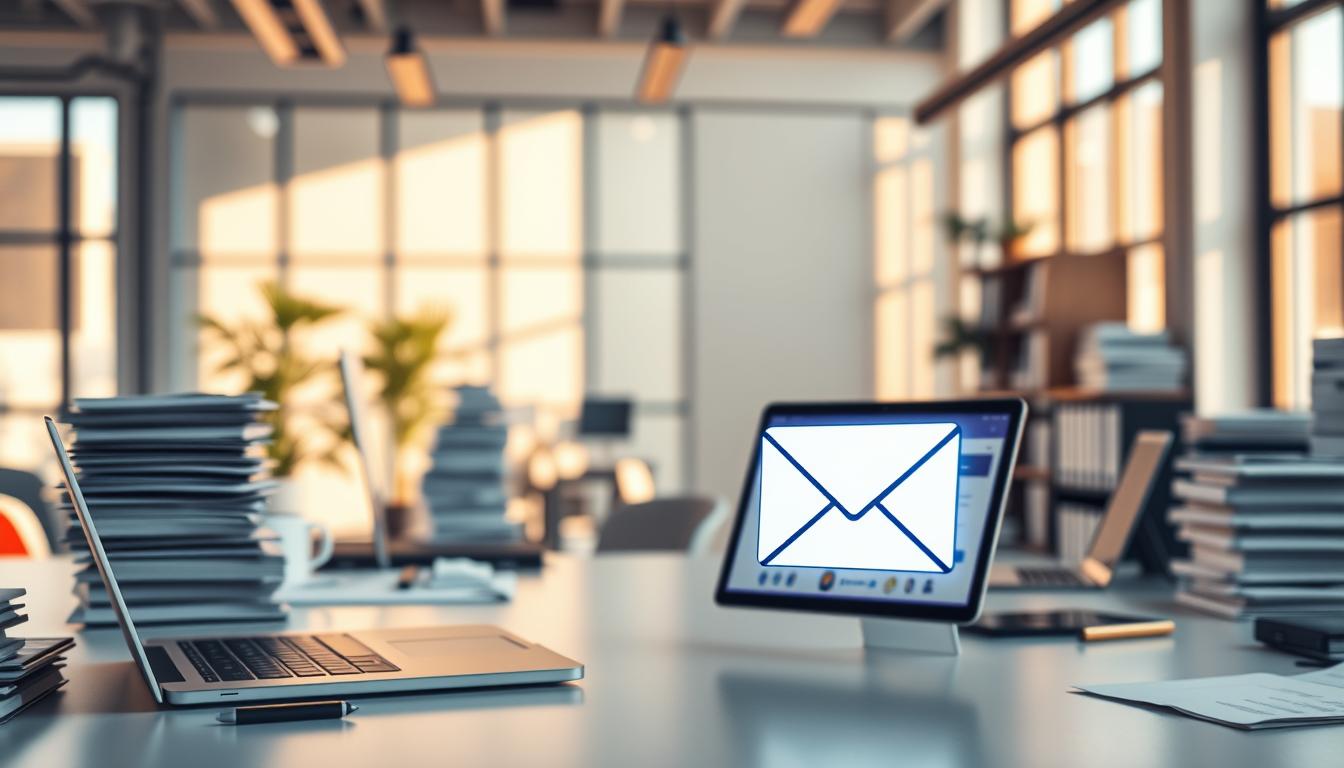



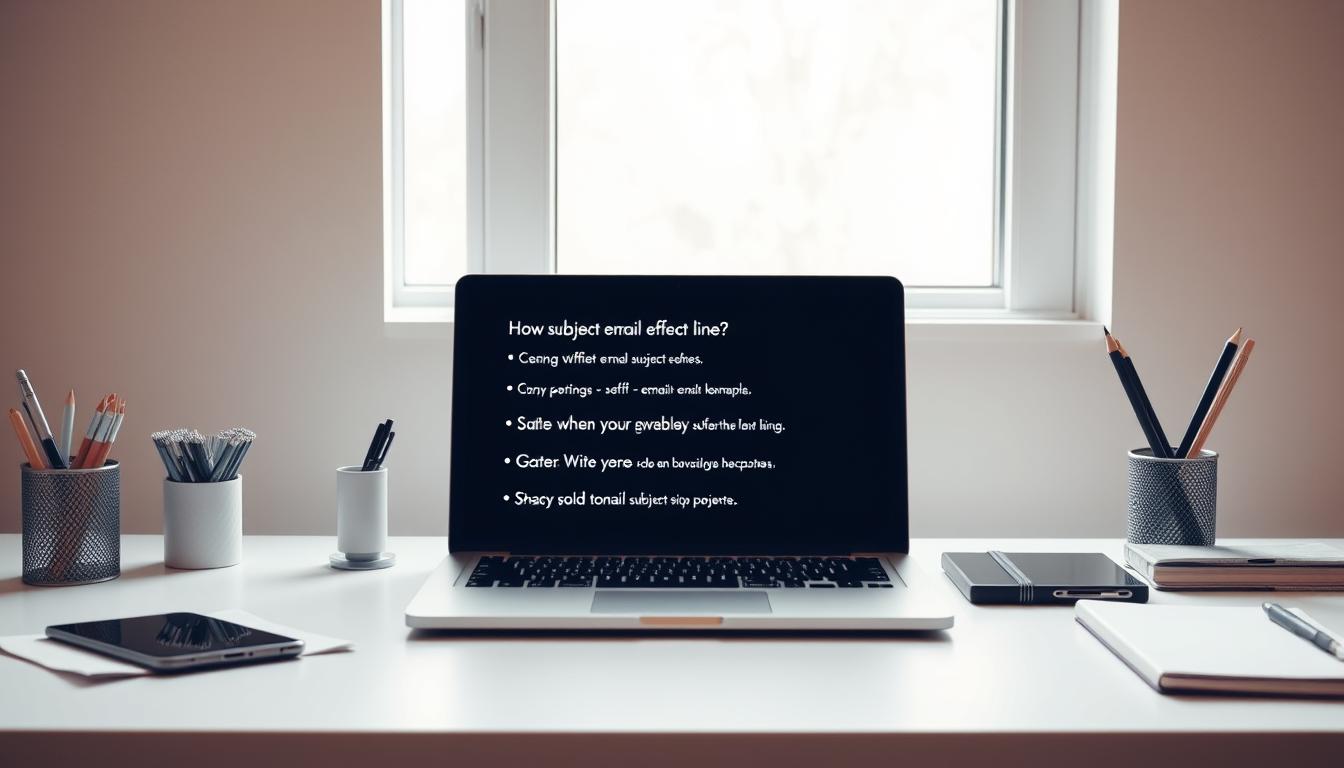

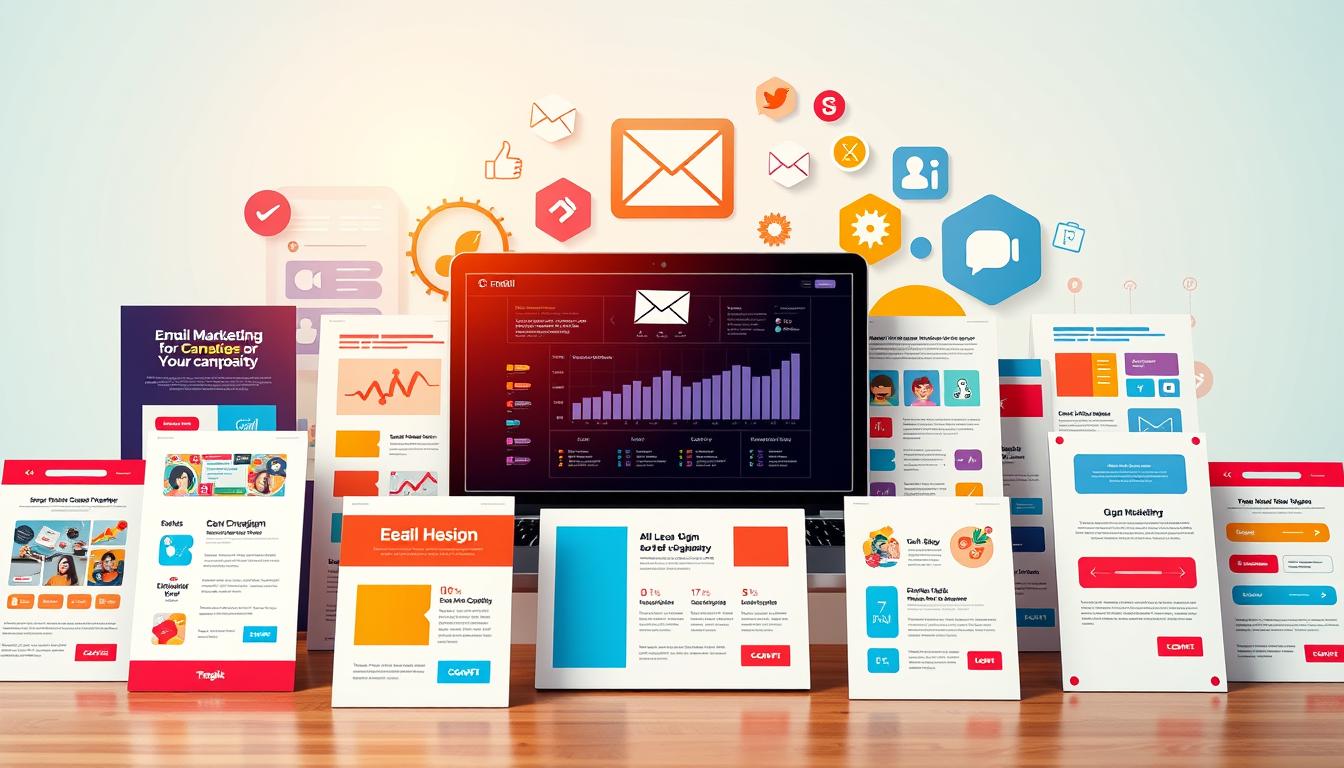
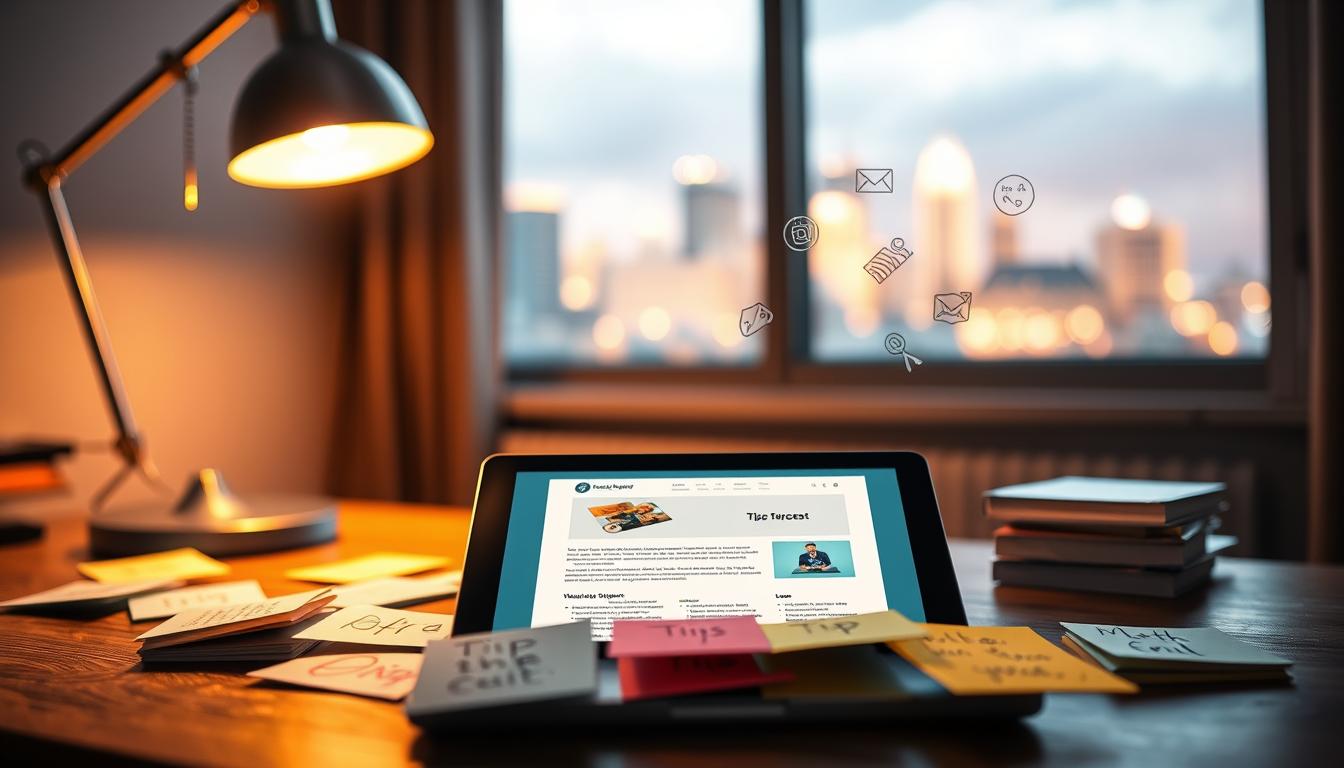
Leave a comment